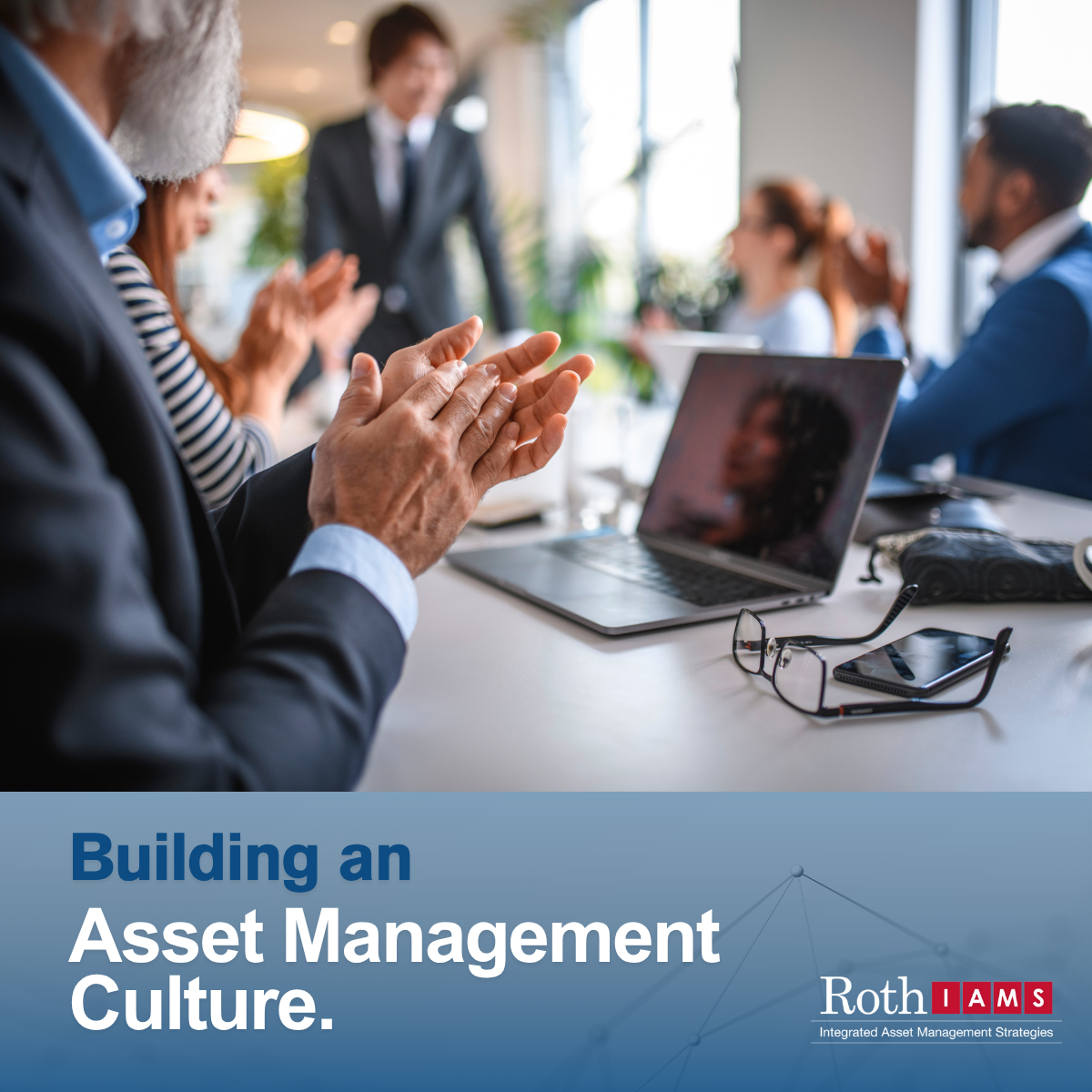At Roth IAMS, we’ve seen time and again that a strong Asset Management (AM) culture starts with leadership. If your senior executives aren’t fully invested, even the best data, plans, and processes will fail to achieve your goals.
Asset management needs to be more than a technical process tucked away in the facilities and physical plant department. It should be a strategic process, fully aligned with your organization’s broader mission, whether that’s enabling student success, delivering critical services to your community, creating an effective environment for healing, or achieving climate and sustainability goals.
The best rocket fuel for achieving your AM approach starts when leadership recognizes that asset decisions impact risk, service delivery, and long-term financial stability. Communicating the “why” behind assessments, lifecycle planning, and capital prioritization is key. These aren’t just technical exercises, they’re about making smart, defensible choices for the future.
One key area that we have found helps to change how senior leaders/stakeholders view AM is a focus on changing how they view their facilities. Many organizations (that are not in the real estate business) view their facilities as a cost or cost centre (more than just from an accounting perspective). How do you typically manage costs? You try to cut costs.
However, if you can get them to view their facilities as assets that are critical to the successful achievement of your organization’s mission, it can have a huge impact on perceptions and the reality that goes along with it. If you have an asset, how do you manage it? Typically, you invest in it so that the value grows.
Executive leadership sets the tone and priorities for the entire organization. When asset management is included in strategic discussions, it elevates its visibility and importance. It shows that we’re not just managing buildings—we’re managing risk, value, and outcomes.
We often work with senior executives, boards, and councils to help them understand how AM isn’t a one-time initiative or a project with a fixed end date. It’s an ongoing discipline that supports better decisions. The organizations that embrace it holistically are the ones that see lasting results.
Leadership should also model the behaviour we want to see across the organization. When executives ask questions about asset data, participate in prioritization discussions, and insist on long-term thinking, it sends a clear message that this matters.
What can leadership do today?
- Integrate AM goals into the strategic plan.
- Tie capital and maintenance investment discussions to service delivery outcomes.
- Speak openly about the long-term risks of Deferred Capital Renewal and Maintenance.
- Assign clear executive sponsorship to AM initiatives.
Leadership matters. It’s the foundation that supports an effective asset management culture. Without it, efforts will be fragmented and short-lived.




